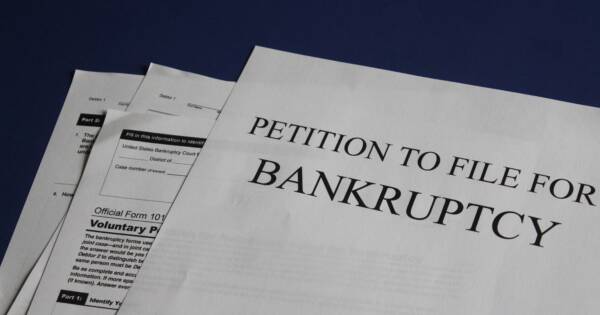In the United States, millions of dollars of real estate changes hands daily. To be legally binding, every one of these transactions requires a signed legal document known as a deed, which confirms or transfers ownership rights to a property. Sometimes, transfer of property ownership occurs immediately upon the death of the current property owner. That’s where beneficiary deed law comes into play.
Beneficiary Deeds Defined
A beneficiary deed — sometimes referred to as a transfer-on-death deed — is a legal estate planning document that’s used to transfer real property at the time of the owner’s death. Once this deed is set up, ownership transfers automatically to the designated person or entity when the current owner dies and a legal death certificate is presented.
Advantages of Beneficiary Deeds
The main benefit of a beneficiary deed is that it lets the parties bypass the probate process, during which the will of a deceased individual is reviewed to determine its validity and authenticity. This process, which can be affected by inheritance disputes and issues involving complicated assets, may range from a few months to a few years, holding up the transfer of property.
Because a preexisting beneficiary deed transfers the ownership of property at the time of death, that property doesn’t become part of the decedent’s estate. Therefore, it isn’t affected by the time-consuming probate process.
For individuals who plan on bequeathing property to a person or entity upon death, there are several other compelling reasons to consider a beneficiary deed.
- Simplicity: Beneficiary deeds are simple to create and to enforce. Depending on your state, activating a beneficiary deed may be as easy as filling out a brief form and recording it with the county recorder where the property is located.
- Cost effectiveness: Beneficiary deeds are often less costly to all parties involved than other means of property transfer, including wills and living trusts. By choosing a beneficiary deed, you may be able to reduce or eliminate fees related to probate or trust management services. This type of deed may also eliminate the need to pay gift taxes because it’s not considered to be a present transfer of property.
- Flexibility: Beneficiary deeds may be updated, amended or revoked at any time by the benefactor, and after the deed, the current owner maintains the rights to take out a loan on or sell the property.
Disadvantages of Beneficiary Deeds
Beneficiary deeds may simplify the transfer of property from grantor to beneficiary, but there are several disadvantages to this legal document.
- Privacy concerns: Beneficiary deeds are considered public information. Anyone can access them and find out who your beneficiaries are as well as a description of the property being transferred to them.
- Monetary issues: Beneficiary deeds can create financial issues for the people or entity receiving the property. They can affect eligibility for Medicaid or other government assistance programs, and in certain circumstances, the property can potentially be seized by creditors upon transfer.
- Varying state laws: Although more than half of U.S. states recognize beneficiary deeds, not every state does. For property owners with real estate in multiple states, accommodating individual state laws may get complicated. Check with your county recorder to see if your state recognizes beneficiary deeds.
DIY Beneficiary Deed Law
Because beneficiary deeds are simple to set up, many individuals forgo a lawyer and create the document independently using a printable beneficiary deed, such as this one provided by Washington DC’s Office of Tax and Revenue.
Because beneficiary deeds are state-specific, forms may differ depending on where the property is located. RocketLawyer’s Document Creation website provides an easy way to create a beneficiary deed for your state.
If you choose to create your own document, it should include, at minimum, the following information:
- Names and addresses of all current property owners
- A legal description of the named property. (This description may be located on the current deed of ownership.)
- Names of the designated beneficiaries
- A statement that the named property will be transferred at the time of the owner’s death
The document should be properly formatted according to individual state requirements and should be signed and dated before a notary. A beneficiary deed is activated by filing it with the county recorder of deeds where the property is located. Before recording a deed, always check state laws to make sure your document is valid and enforceable.
Other Considerations Affecting Beneficiary Deed Law
Although the laws governing beneficiary deeds are fairly straightforward, there are several factors that should be considered prior to choosing this legal path.
- Conflicting wills: It’s possible for a legal will to conflict with the beneficiary deed by naming a different beneficiary, resulting in the need to engage in the probate process or court proceedings. This can also occur if a person or entity challenges the validity of the deed.
- State-specific laws: The property’s location rather than the property owner’s current address determines the laws governing beneficiary deeds. Although not all states honor beneficiary deeds, many offer alternative options, such as Florida’s Lady Bird deed, which is an enhanced life estate deed that provides similar provisions.
- Alternate beneficiaries: By including an alternate beneficiary, you can prepare for the possibility that you outlive your primary designee.
- Alternatives to beneficiary deeds: Beneficiary deeds aren’t the only way to transfer property upon the death of the owner. Other options include wills, trusts, joint tenancy and pre-death gifts.
Whether you choose a beneficiary deed or opt for an alternative solution, it’s important to know the state laws governing these legally binding property transfer documents.






